ABSTRACT
The thesis aims to contextualize household waste on the more complete material flows it belongs to, including reciprocal relations between its landscapes of production and landscapes of landfill. Current one-way processes of waste treatment are repositioned within more circular economies which, it is argued, may also bring ecological benefits to our cities. The study focuses on a local community at Mount Hope district in Providence, RI. As part of a wider landscape framework that includes a study on consumer behaviour, a series of modular strategies are developed based on this community’s main characteristics, with an eventual goal of integrating community participation and awareness in the decision making process.
Relying on public engagement as a form of raising collective awareness, the work suggests that well-integrated bottom-up strategies operating between the scales of the household, the street and the neighborhood, may affect people’s consciousness and behavior, change the way people use materials and generate waste, and eventually try to change the structure of how we operate in society in relation to waste and lead us closer towards a waste-free future.
Image
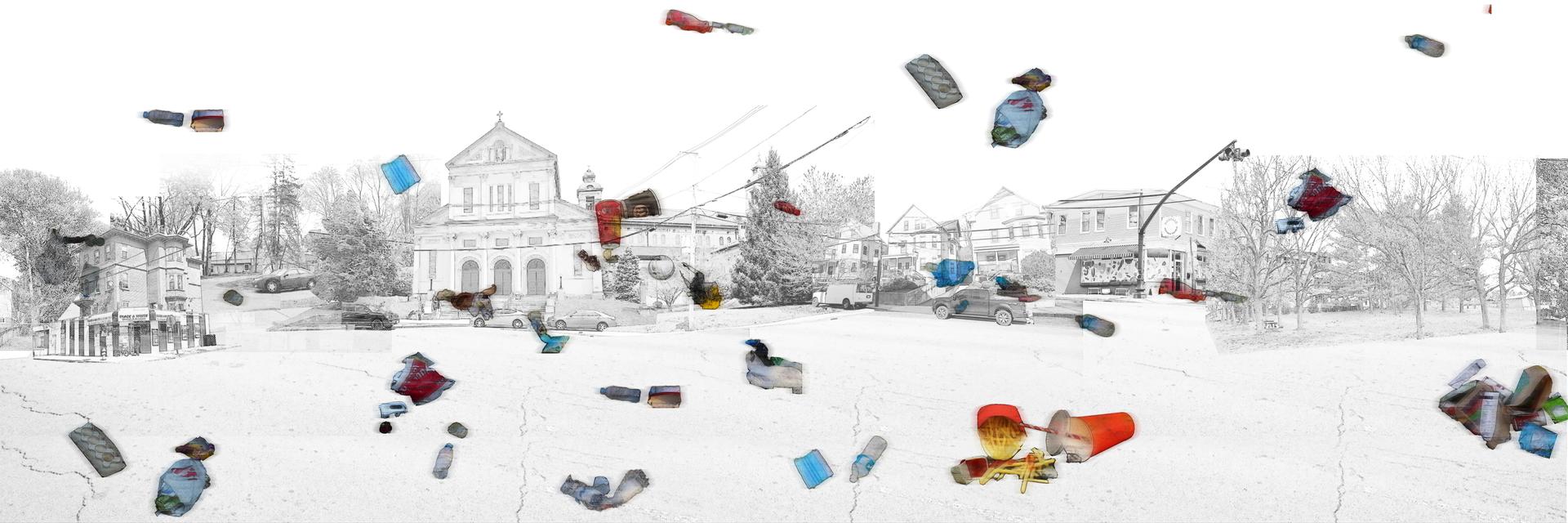
Waste Diary
In order to better understand the composition of household waste and better tell their story, I recorded my own waste in an initial waste diary. In the process, I also felt that the relationship between myself and waste changed; it gradually became closer.
Image
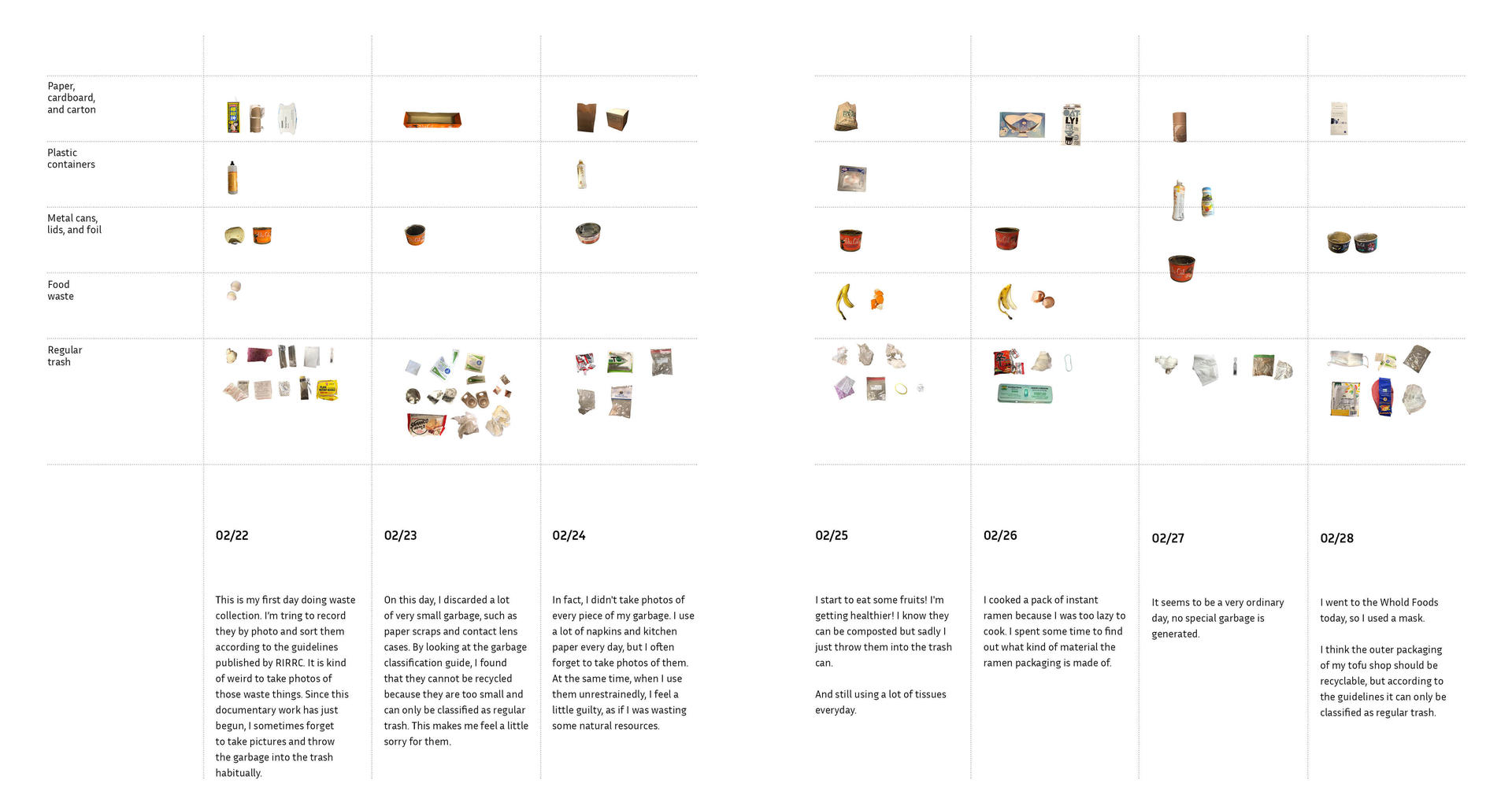
Material Flow of Eggs
By chosing typical types of waste material from the waste diary and tracing their flow, the current relationship between the landscape of production and the landscape of landfill are connected through the consumer behavior.
Image
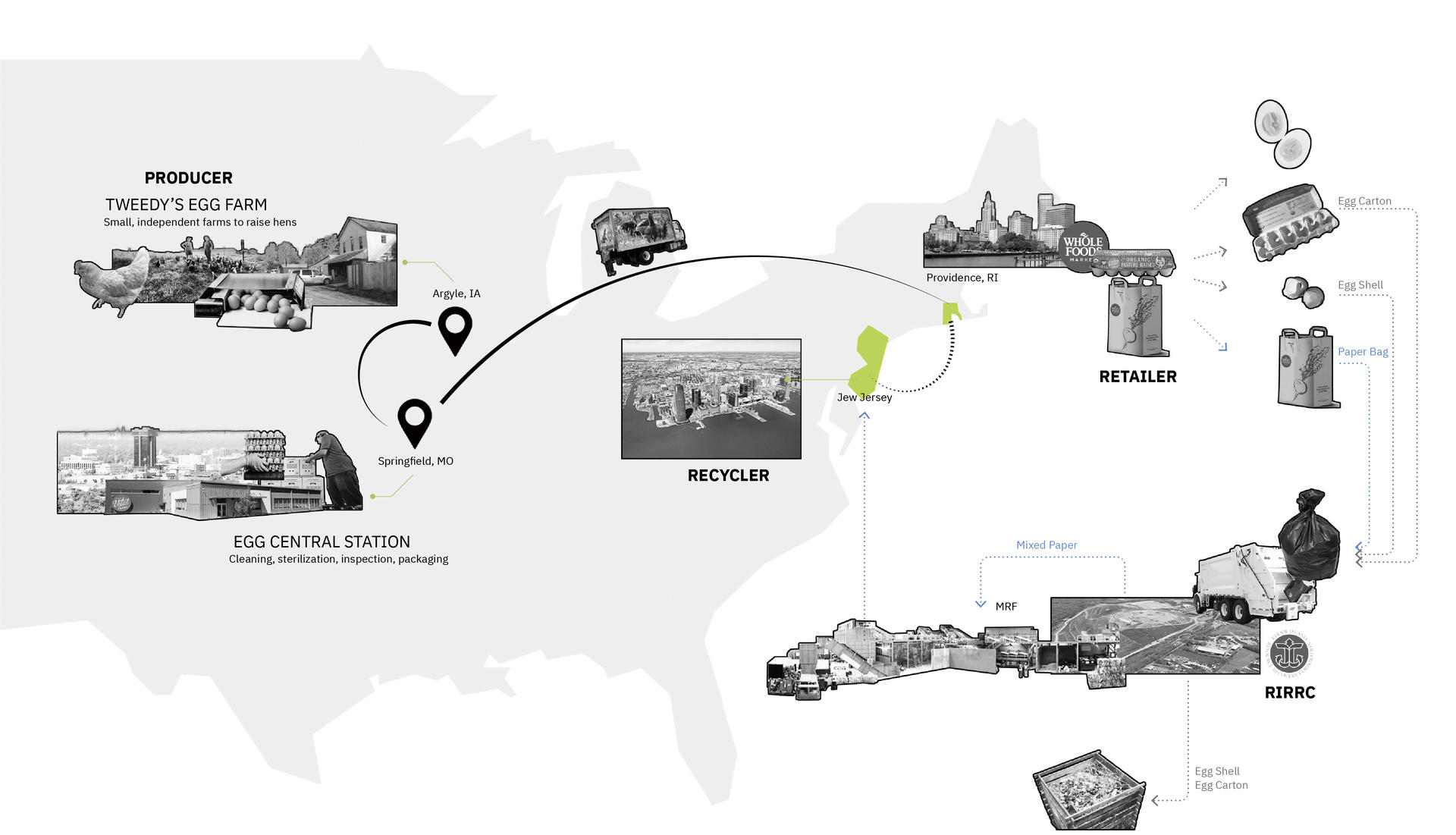
Image
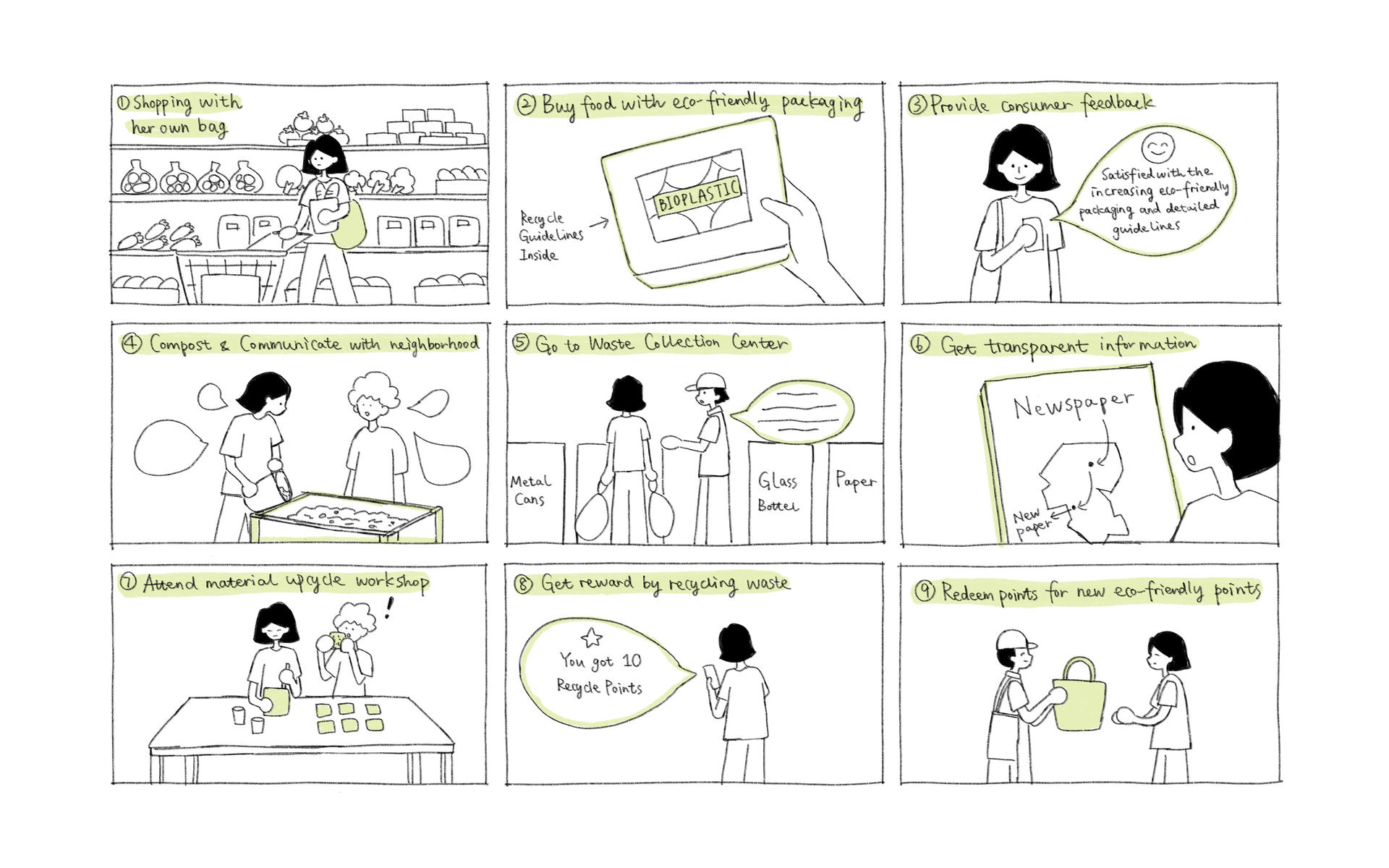
Image
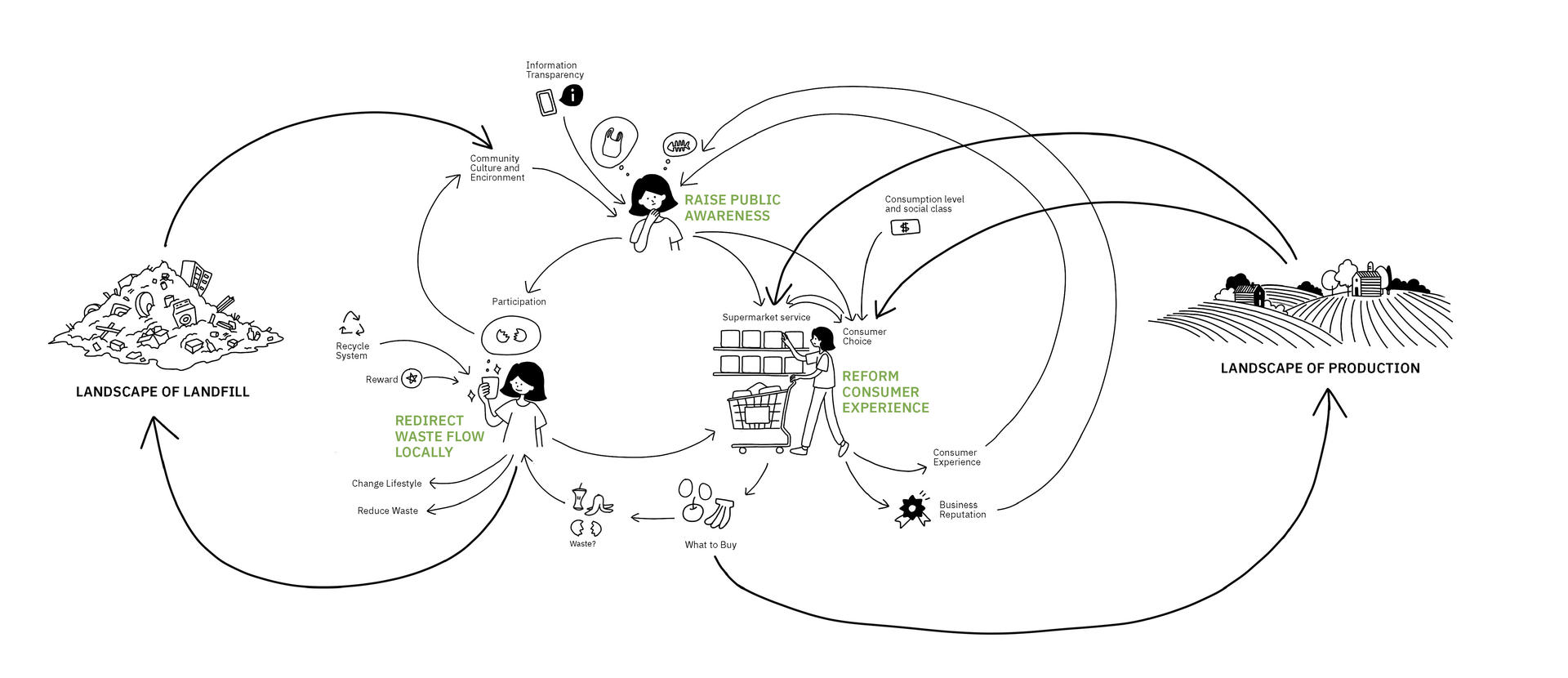
Raising public awareness begins with improving the transparency of information. Actions like these can both change the consumer experience and promote residents to participate more actively in waste recycling. On the one hand, as the consumer experience changes, the services provided by supermarkets and our attitudes towards them can also be changed. On the other hand, there will be less non-degradable waste produced, and more waste will be recycled and upcycled to go back into the material flows, and therefore, help create a better community environment, that is more friendly to waste.
The three principles promote each other instead of building a linear structure. And they work together to bridge the gap between the landscapes of production and the landscapes of landfill involved in the flows. Our relation to these landscapes, which are often outside of our mind when it comes to our waste generation, can change as we change our attitude and behavior to waste, and reduce the amount of waste that is harmful to the environment.
Options of how people can occupy these spaces that are now vacant, are explored, as templates that others can eventually refer to. However, here I just put forward some possible ways of using the site. Any final decision affecting the space should always be informed by the community residents.
Image
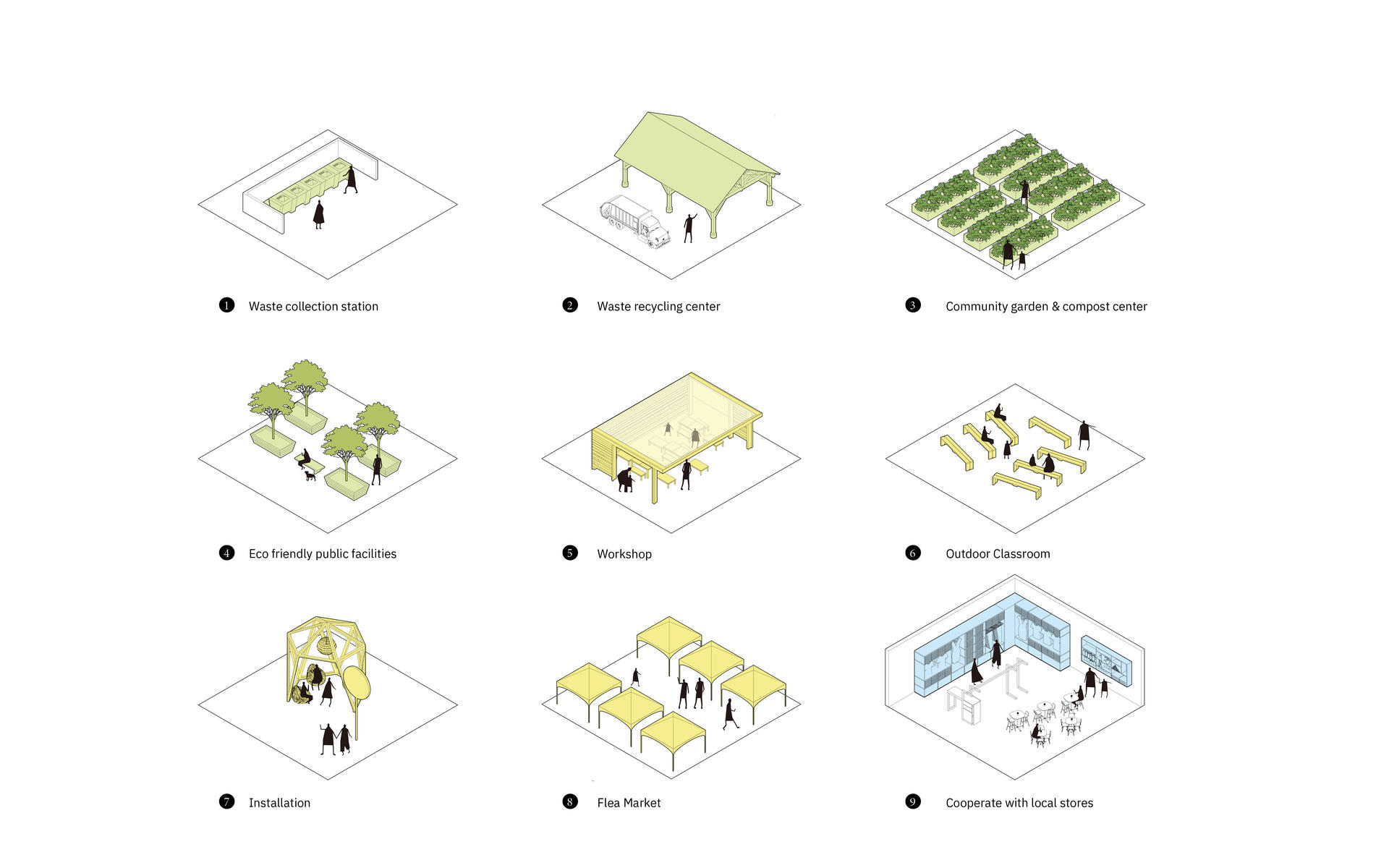
Image
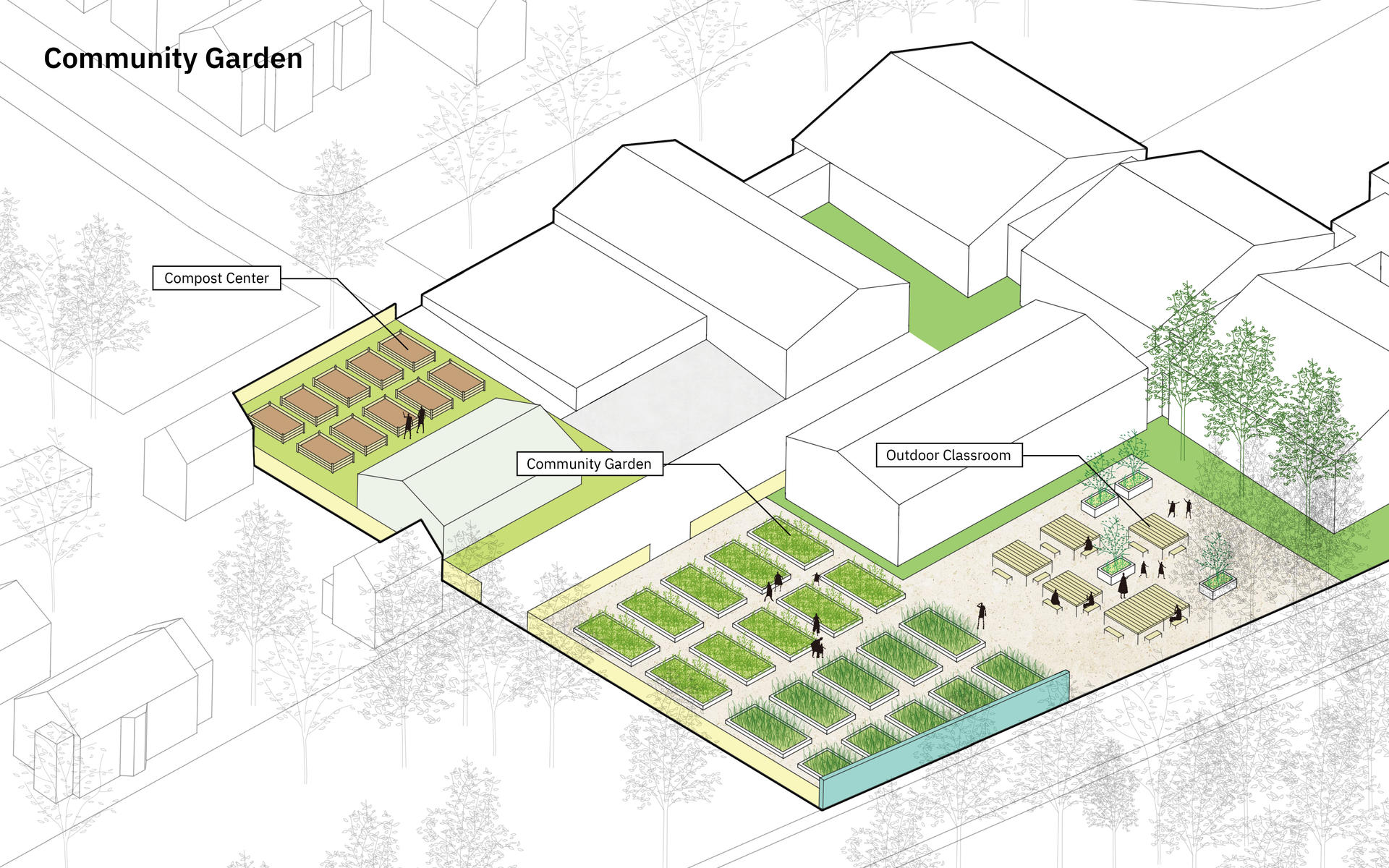
Image
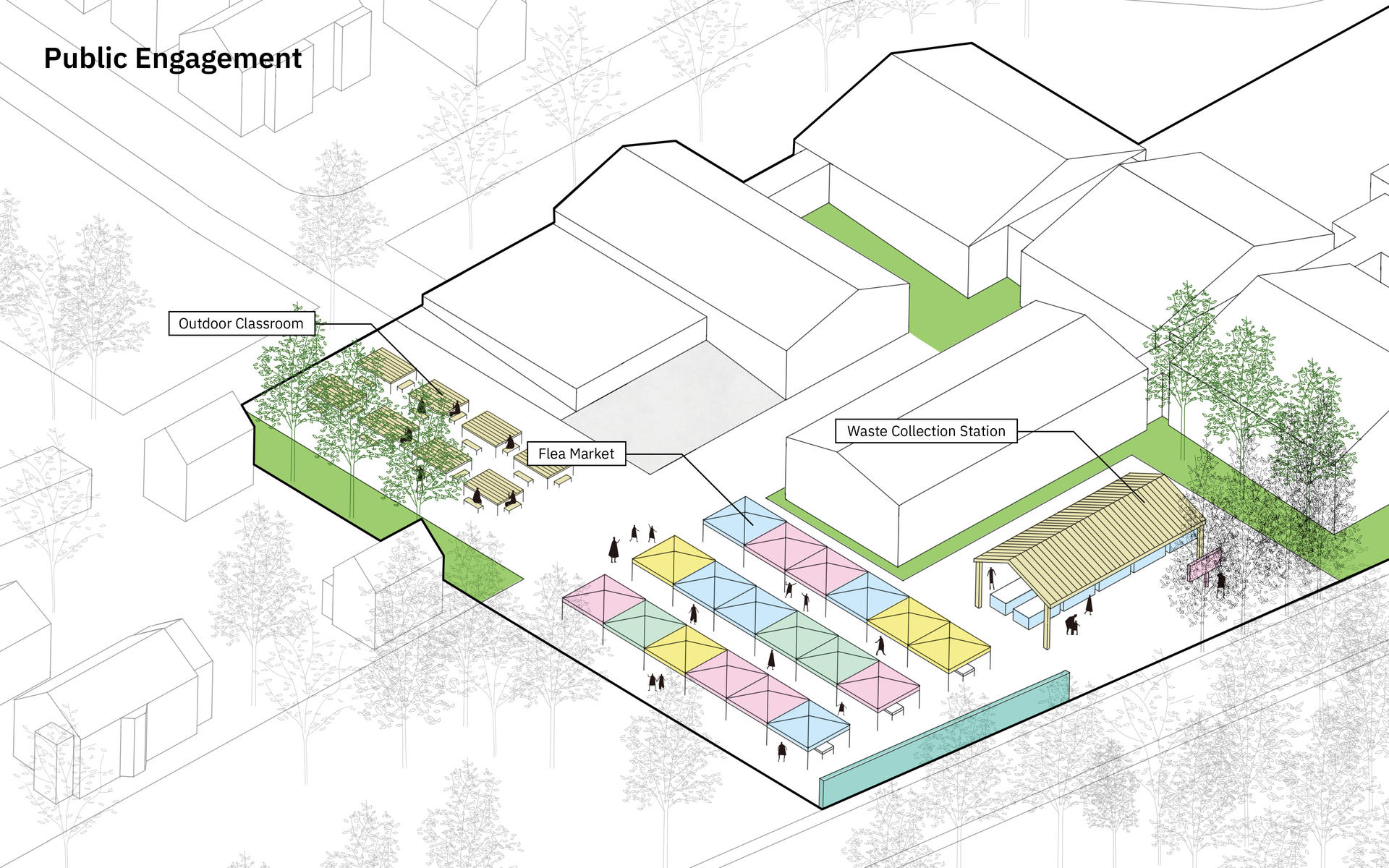
Image
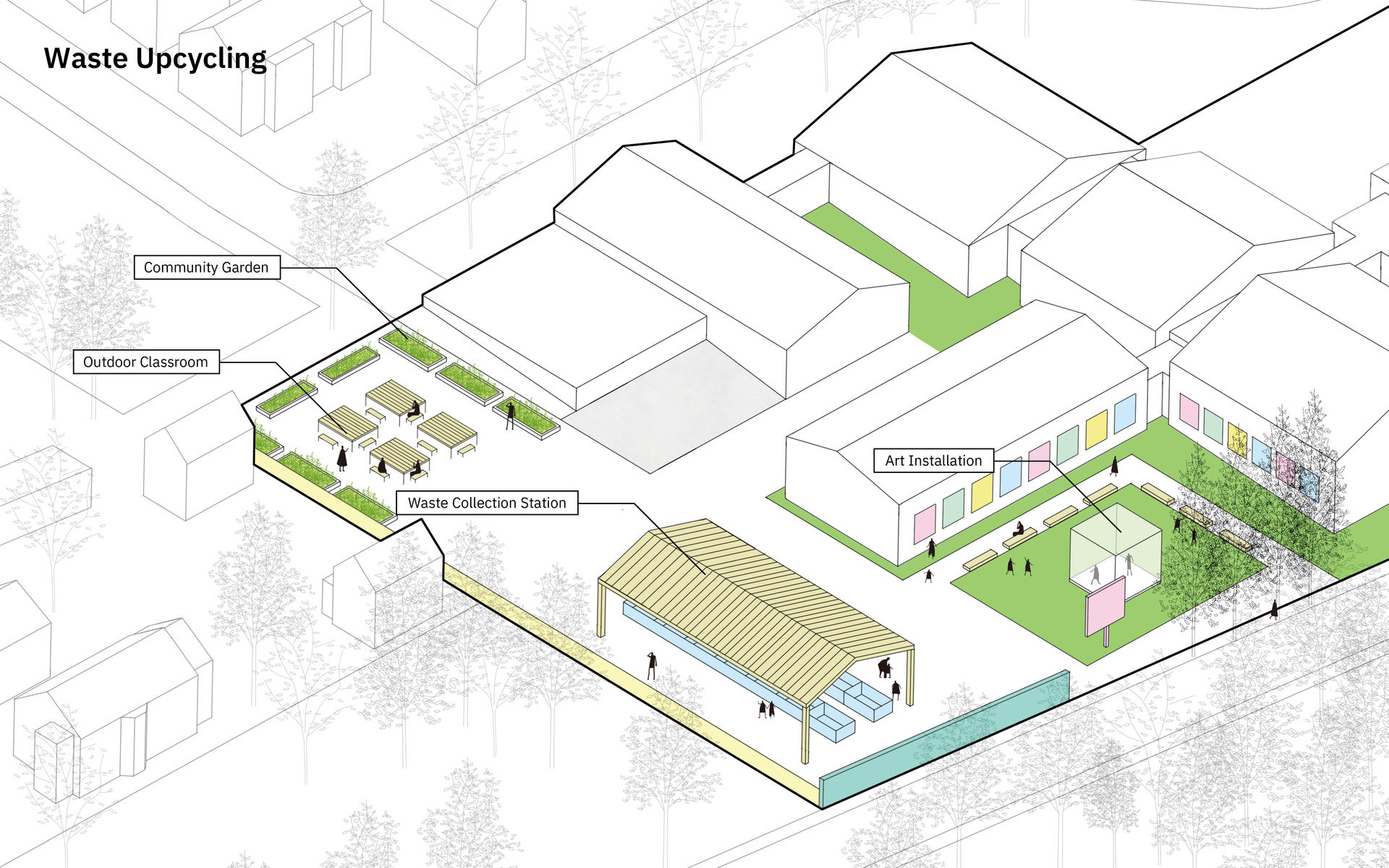
Shut Down Streets
The strategies can also be integrated into the whole street. I provide the option for residents in this community to shut down part of the street temporarily(shows in green in the figure) and gather residents to the street from both side to do something together that relate with waste, which can on the one hand, enhances community cohesion, and on the other hand, help reduce the total amount of generated waste by involving everyone.
Image
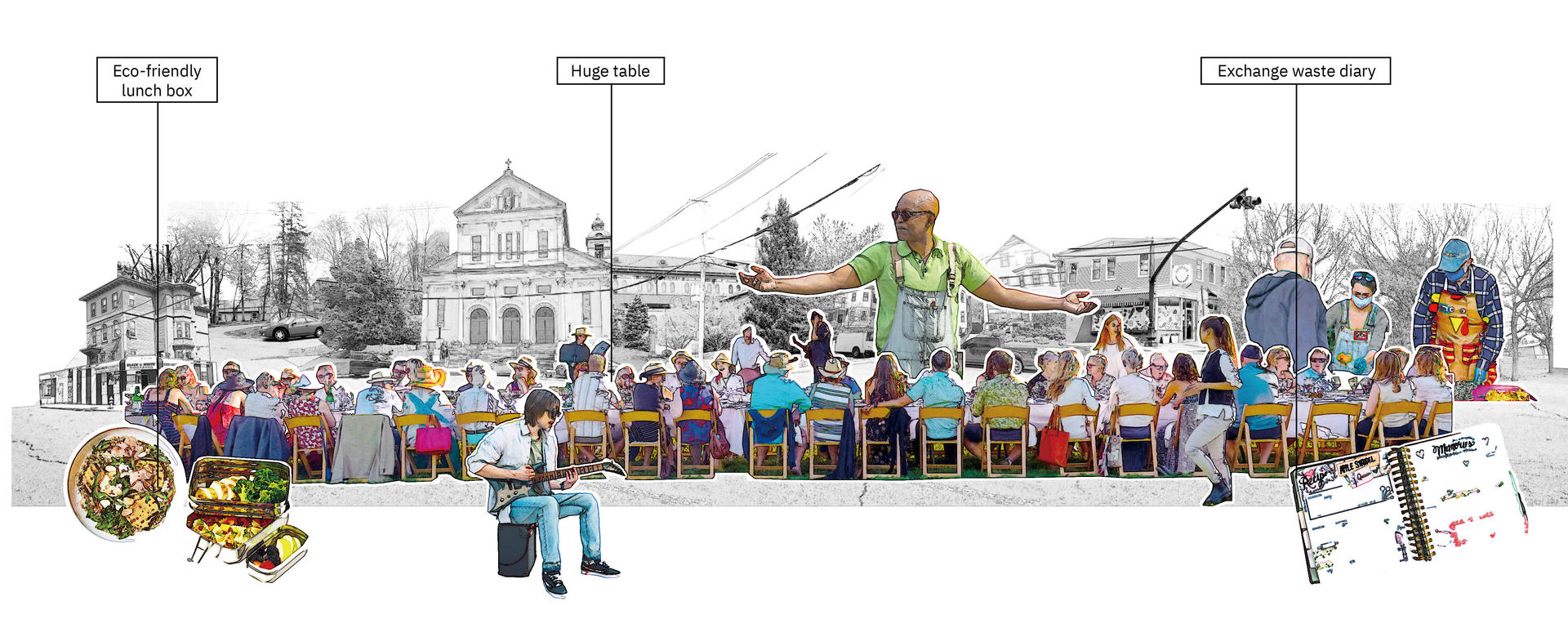
New Street Profile
Residents can chose to shut down part of the street temporarily and hold events.
Image
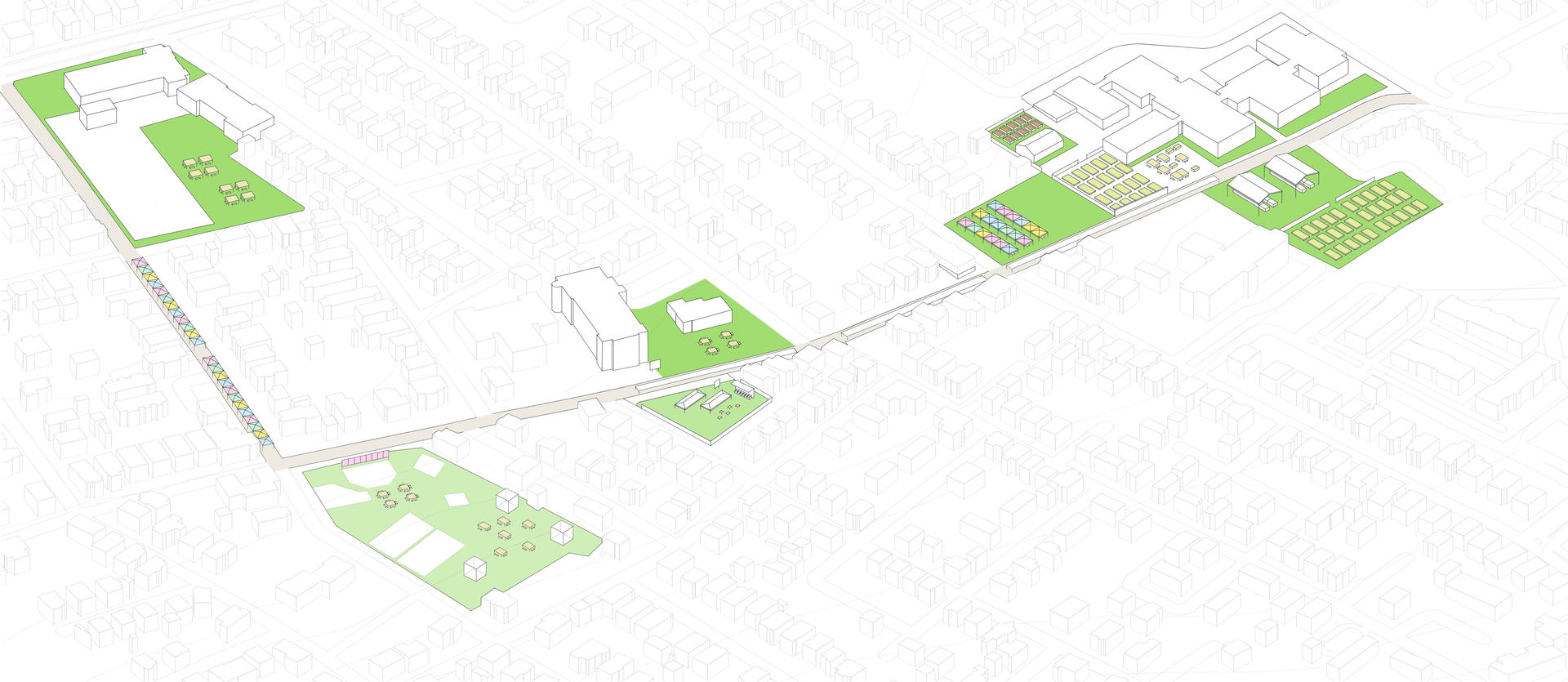
The thesis focuses on the destigmatization and elimination of waste by affecting people’s consciousness and behavior, changing the way people use materials and generate waste, and even eventually trying to change the structure of how we operate in society in relation to waste. The goal is to reduce the impact of consumption behavior on the environment by building a more circular economic system, thus creating a community that cares about the environment, and moves towards a waste free future.
Relying The issues around waste and its flows are complex and multiscalar. They are not something that can be solved easily or immediately. Rather, the strategies require subtle yet continuous measures and ideas that may result in the changing of the residents’ attitudes and behaviors, and gradually make their community better. Standing in the middle between the landscapes of production and the landscapes of landfill, and being directly tied to how markets operate in capitalist societies, consumers can use their own initiatives and behaviours to affect change This thesis is an invitation to use landscape to lead them to take the first step.
